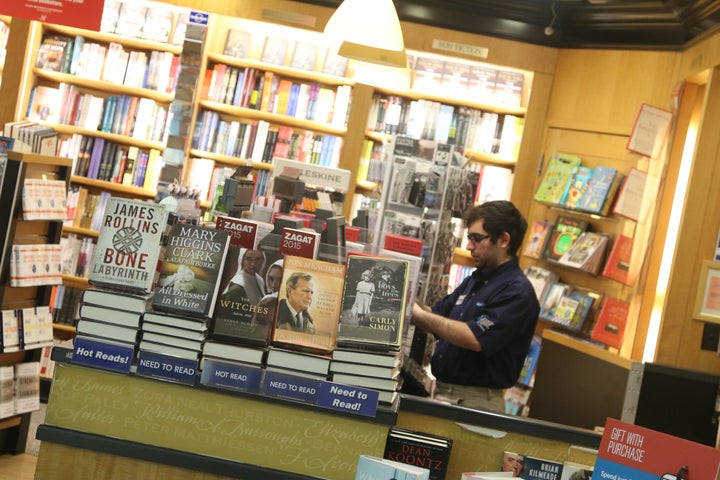
The numbers don’t lie: James Patterson loves clichés. He deploys 160 for every 100,000 words he publishes. Yikes!
In a new book, Nabokov’s Favorite Word Is Mauve, statistician Ben Blatt runs the numbers on bestselling and classic literature, coming to some startling ― and not-so-startling ― conclusions. In a Publishers Weekly article, Blatt shared a few of the stats from his book, revealing the most, and least, cliché-prone, exclamation-point-heavy, and weather-obsessed authors. “If you have a body of literature, stats can now serve as an x-ray,” he writes.
Some of the revelations are hardly surprising.
Patterson, who has his name on over 200 novels, many of them bestsellers, isn’t known for his innovative prose. After crosschecking 50 classic and bestselling authors against Christine Ammer’s The Dictionary of Clichés, Blatt found that the crime writer took top prize for most clichés. Certain literary writers known for pushing the style envelope weren’t far behind, however. Kurt Vonnegut, James Joyce (rather surprisingly), and Zadie Smith also deployed well over 100 clichés per 100,000 words. On the low end: Virginia Woolf, Veronica Roth, and Khaled Hosseini.
What about exclamation points? Noir novelist Elmore Leonard hates ‘em (49 per 100,000 words) and James Joyce loves ‘em (1105 per 100,000 words). Interestingly, male writers populate the extremes of Blatt’s body of authors, when it comes to exclamation points. The top users include Tom Wolfe, J.R.R. Tolkien, and Sinclair Lewis, while the bottom users include Ernest Hemingway, John Updike, and Chuck Palahniuk.
Blatt also analyzed how often authors open their books with descriptions of the weather, a scene-setting tactic that, he points out, was slammed by spare stylist Leonard. “The reader is apt to leaf ahead looking for people,” Leonard argued in a 2001 New York Times column. While some authors, like Toni Morrison and Ernest Hemingway, never mention weather in the first sentence, Blatt found that John Steinbeck and Willa Cather both did so about a quarter of the time. And then there’s the all-time champ: “Danielle Steel, known for selling hundreds of millions of books, should also be known for talking about the weather,” he writes. “Nearly half her of introductions involve weather.”
These stats might not tell us anything particularly world-shaking about the authors we love, but there’s an inherent fascination about seeing the habits and stylistic patterns of great writers broken down into precise parts. Frankly, we just can’t get enough of it.
Check out graphics and more stats from Blatt on Publishers Weekly.
